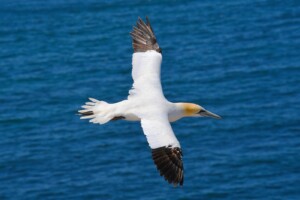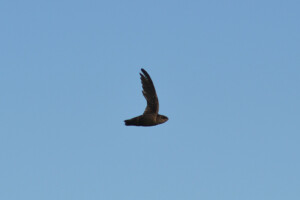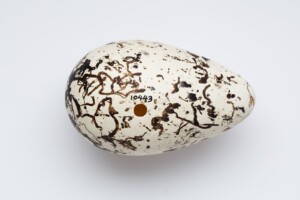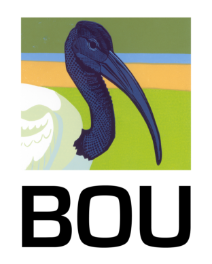Editor’s picks
READERS Current issue | All issues || AUTHORS Submit a paper | Author guidelines
Highlights from the latest issue
April 2024 | Vol. 166, issue 2
We’re pleased to deliver the second issue of 2024 containing within it our Avian Reproduction Special Issue with 1 review paper, 11 full papers, and 1 Forum article, plus the main issue containing an additional 2 review papers, 7 full papers, 4 Short Communications, our regular book reviews and the 2024 Godman-Salvin Prize citation.
Here, Editor in Chief, Jenny Gill, has selected four of her highlights.
- REVIEW ARTICLE
The causes and implications of sex role diversity in shorebird breeding systems
Tamás Székely, Maria C. Carmona-Isunza, Noémie Engel, Naerhulan Halimubieke, William Jones, Vojtĕch Kubelka, Romy Rice, Claire E. Tanner, Zsófia Tóth, José O. Valdebenito, Kees Wanders & Grant C. McDonald
In April 2022, the annual BOU conference was on the topic of Avian Reproduction, and this issue contains a series of publications arising from that meeting. This Special Issue opens with this review article exploring recent advances in sex role research, focussing on shorebirds as a group in which the diversity of mating and parenting roles of males and females is unusually high. The authors identify six key knowledge gaps in the study of shorebird breeding systems, and highlight the important role that individual tracking will play in revealing more about the contributions of selection, conflict and cooperation to sex role diversity. This review provides an excellent opening to this fascinating Special Issue.
View
- ORIGINAL ARTICLE | POPULATION PROCESSES
High pathogenicity avian influenza (H5N1) in Northern Gannets (Morus bassanus): Global spread, clinical signs and demographic consequences
Jude V. Lane et al
The scale of impact of the current avian influenza outbreak on bird populations globally is shocking, and colony-breeding seabird populations have been particularly hard-hit. The Northern Gannet colonies of the North Atlantic are well-monitored, and researchers watched with heavy hearts at the inevitable arrival of the virus. However, these researchers also responded with remarkable speed to track the virus spread and assess its impact. Here, Lane and colleagues report the findings of this huge international collaboration, and describe an intriguing apparent change in the iris colour of gannets that have survived a period of infection. HPAIV-H5N1 is likely to be with us for some time, and such markers of previous infection status may prove crucial in understanding immunity and the actions that we can take to aid population recovery.
View
- SHORT COMMUNICATION
Artificial light at night affects the timing of roosting by Chimney Swifts
Emma Dougherty, Harald F. Parzer & Elise R. Morton
Rapid increases in the use of artificial light during nighttime have fuelled serious concerns about potential impacts on wildlife, particularly species that use natural light as an environmental cue for the timing of key events. In this short communication, Dougherty et al. measure the timing of Chimney Swift entry into 21 nocturnal roost sites with varying levels of artificial light at night. The study reveals delayed entry into roost sites with elevated light levels, and that later times of entry to roost in autumn than summer were not present in sites with artificial light. These effects could potentially influence predation risk and timing of migration, and the authors highlight the urgent need to understanding such effects of light pollution and their consequences.
View
- FORUM
Factors determining persistent asymmetry and egg shape in birds: A hypothesis
Denis Charles Deeming
The shape of birds’ eggs is distinctive and recognisable, but what processes are involved in forming these shapes? In this Forum article from the Avian Reproduction Special Issue, Charles Deeming presents a new hypothesis to explain how egg shape is established within the oviduct by the physical processes operating during egg formation and internal movement. This hypothesis also has potential to explain variation in egg shape within and among species, if egg size relative to female size alters the degree of constriction, influencing the pointiness of the egg. This fascinating insight into the processes involved during egg formation will hopefully stimulate further research to test this hypothesis and reveal yet more about the magic of birds’ eggs.
View
Other items
Book reviews
British Ornithologists’ Union Godman-Salvin Prize
View all papers in this issue
Sign up for content e-alerts
Image credits
From top:
Black-winged Stilt | Ryzhkov Sergey CC BY-SA 4.0 Wikimedia Commons
Northern Gannet | Carsten Steger CC BY-SA 4.0 Wikimedia Commons
Chimney Swift | Andrew C CC BY 2.0 Wikimedia Commons
Uria aalge egg | Auckland Museum Collections CC BY 2.0 Wikimedia Commons


